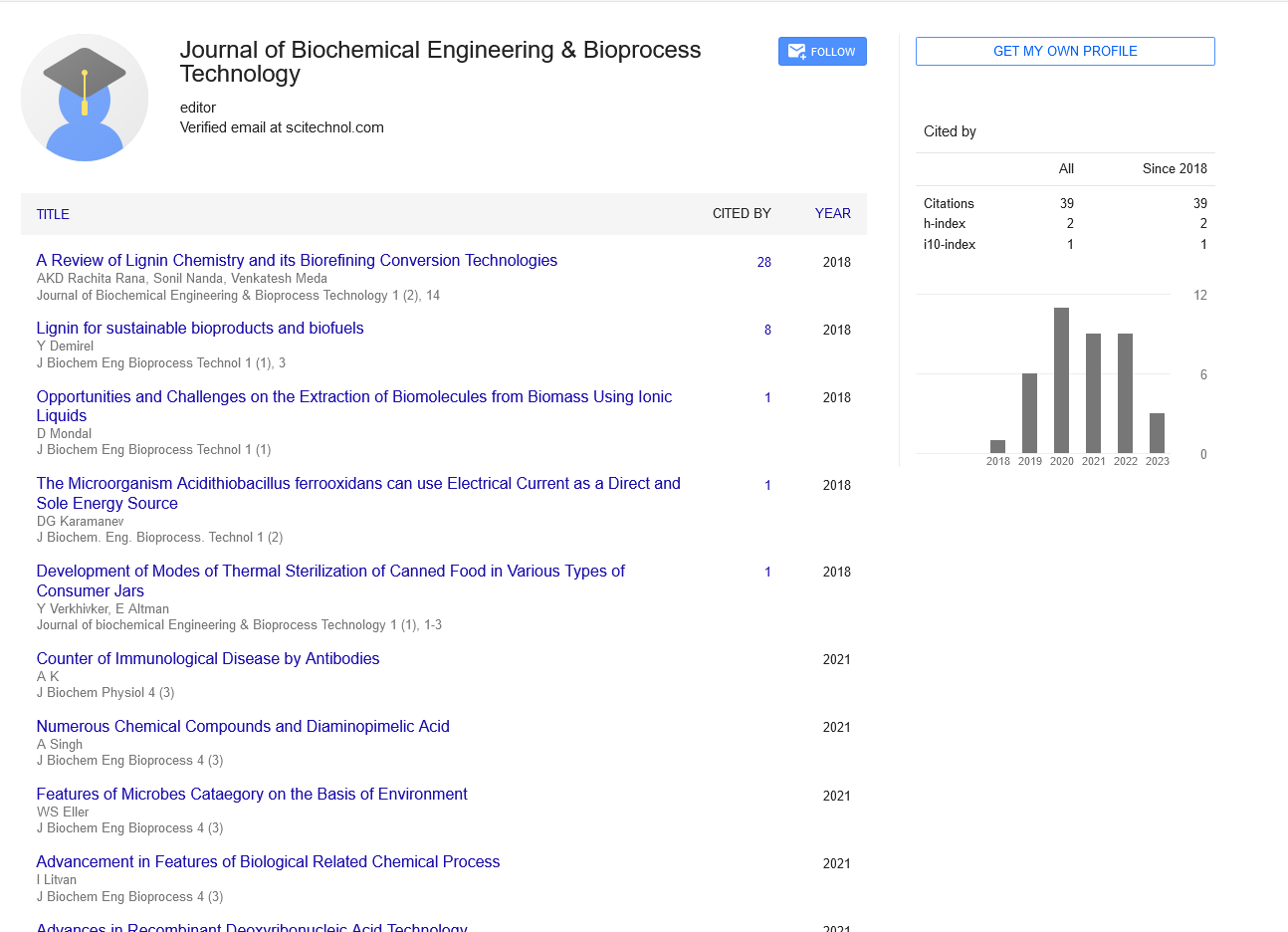Perspective, J Biochem Eng Bioprocess Vol: 6 Issue: 1
Biomedical Devices and Diagnostics: Advancing Healthcare Technology
Tom Christiaens*
Department of Biomedical Engineering, University of Twente, The Netherlands
*Corresponding Author: Tom Christiaens
Department of Biomedical Engineering,
University of Twente, The Netherlands
E-mail: christiaenst34@gmail.com
Received date: 15 February, 2023, Manuscript No. JBEBT-23-93170;
Editor assigned date: 17 February, 2023, Pre QC No. JBEBT-23-93170(PQ);
Reviewed date: 03 March, 2023, QC No. JBEBT-23-93170;
Revised date: 10 March, 2023, Manuscript No: JBEBT-23-93170(R);
Published date: 17 March, 2023, DOI: 10.35248/jbebt.1000049
Citation: Christiaens T (2023) Biomedical Devices and Diagnostics: Advancing Healthcare Technology. J Biochem Eng Bioprocess 6:1.
Description
Biomedical devices and diagnostics play a important role in modern healthcare by providing accurate and reliable information about a patient's health status. The development of new technologies in this field has led to significant improvements in patient care, from the diagnosis and treatment of diseases to the monitoring of chronic conditions. In this manuscript, we will discuss the fundamentals of biomedical devices and diagnostics, including their importance in healthcare and the latest advancements in the field. They are essential tools in modern healthcare. These devices and diagnostics are used to monitor, diagnose, and treat a wide range of diseases and conditions, from cancer and cardiovascular disease to diabetes and respiratory disorders. Advances in biomedical technology have led to the development of innovative devices and diagnostics that have revolutionized the way healthcare is delivered.
Biomedical devices are used to treat or manage a variety of medical conditions. These devices range from simple instruments like stethoscopes and thermometers to complex surgical tools and implantable devices like pacemakers and artificial joints. Biomedical devices can also include wearable technology, such as fitness trackers and smartwatches that monitor various physiological parameters to provide information about a person's health status.
Medical imaging is a important component of biomedical diagnostics, providing detailed images of internal organs and structures. Medical imaging techniques include X-rays, CT scans, MRI scans, and ultrasound imaging. These techniques are used to diagnose a wide range of conditions, including cancer, cardiovascular disease, and neurological disorders. Advances in medical imaging technology have led to the development of more precise and accurate imaging techniques, enabling healthcare providers to better diagnose and treat medical conditions.
Implantable devices are biomedical devices that are implanted in the body to treat or manage medical conditions. These devices can include pacemakers, defibrillators, artificial joints, and insulin pumps. Implantable devices can improve the quality of life for patients with chronic conditions, allowing them to better manage their symptoms and maintain their health.
Wearable technology is an emerging field in biomedical devices, with devices like fitness trackers and smartwatches providing realtime monitoring of physiological parameters like heart rate, blood pressure, and blood glucose levels. Wearable technology can be used to monitor and manage chronic conditions like diabetes and cardiovascular disease, enabling patients to take a more active role in their healthcare.
Biomedical devices and diagnostics play a critical role in modern healthcare, providing accurate and reliable information about a patient's health status. Advances in biomedical technology have led to the development of innovative devices and diagnostics that have revolutionized the way healthcare is delivered. As technology continues to advance, the field of biomedical devices and diagnostics will continue to grow, enabling healthcare providers to better diagnose and treat medical conditions and improve the quality of life for patients.
